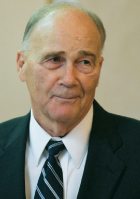
“Where angels fear to tread,” is how John R. Nesselroade, Ph.D., describes the 2013 Anastasi Lecture he will deliver on Oct. 22 at 5:30 p.m. in the E. Gerald Corrigan Conference Center on the Lincoln Center campus.
Nesselroade, the Hugh Scott Hamilton Professor of Psychology Emeritus at the University of Virginia, said that his years of experience have led him to develop ideas that might veer in tone—if not in substance—from standards developed by Fordham’s Anne Anastasi, Ph.D., a pioneer in the field of psychometrics.
In his talk, “Standardized Measurement in Behavioral Science: Blessing or Curse?” Nessleroade plans to challenge the Anastasi camp to rethink the status quo.
He says that progress in measurements used in behavioral science theory-building has not been made rapidly enough. He will examine selected aspects of current measurement practices, including the heavy reliance on standardized measurement in a field where important concepts often cannot be directly measured.
Nesselroade said behavioral science requires two levels of variables: latent, which cannot be observed, and manifest, which can be observed. He calls into question standardized measurements to gather the manifest variable.
“You can’t measure feelings but you can read a face, and that’s often the standardized measurement part,” said Nesselroade. “But two people can be red in the face and one might be red from embarrassment, while another is red from anger.”
Such observable behavior has developed a “certain sanctity” in the field, he said, with many practitioners assuming that an observable behavior holds the same meaning from one person to the next. He cited a second example of one who gets cut off in traffic and shouts an expletive, while another might seethe quietly. Both persons are angry, yet only one reaction is observable.
“Frustration produces aggression, yes, but don’t look for it to produce the same reaction in everyone,” said Nesselroade. “Once you get that point across, it starts to raise questions about standardized measurements.”
The lecture is open to the public.
For more information, contact David Budescu, Ph.D., at [email protected].
]]>